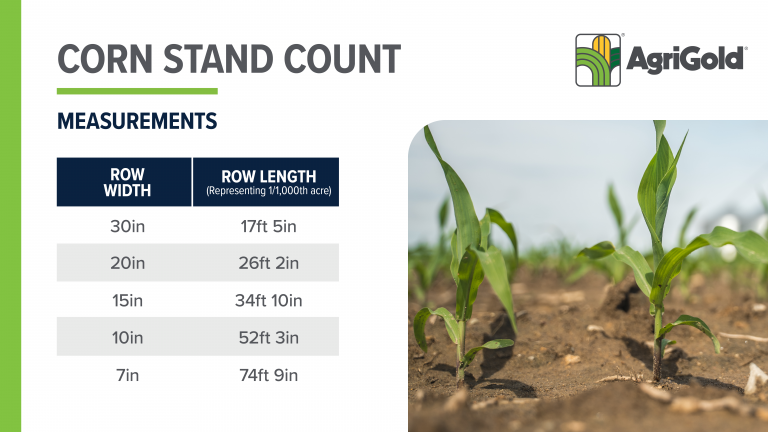ASSESSING THE NEED FOR REPLANTING: ANALYZING POTENTIAL CONSEQUENCES AND ROI
Under certain circumstances, corn and soybean replants may be necessary to protect a farm’s yields — and profitability.
A replant may be the appropriate route if a significant portion of the crop fails to emerge (or does so unevenly). This can happen when:
- Unfavorable weather conditions, such as too much rain, drought, natural disasters, or extreme temperature drops, keep a crop from emerging properly.
- Pests or diseases are present. These can compromise its potential yield, health, and financial performance.
- Crusted soil, soil borne fungi and bacteria, or nutrient deficiencies have hurt the plant stand.
Here are a few factors to help evaluate whether to replant:
- What is the existing plant stand’s distribution and uniformity?
- What’s the yield potential of that existing crop?
- What’s the calendar date?
- How many and what kind of weeds are present?
- What is the cost (or potential ROI) of a replant?
EVALUATE THE PLANT STAND
How uniform is the plant stand? The answer to this question will help determine whether focus should be directed to specific parts of the field—or potentially the entire field.
Poor stands can occur for several reasons, such as poor germination, crusted surface, excess moisture, insects, or chemical injury. Some of these factors can be controlled, so be sure to work with your AgriGold agronomist to choose hybrids and varieties that best fit your acres and provide optimal yield and financial potential. Also, don’t forget to read fertilizer, insecticide, and herbicide labels to ensure proper application.
CALCULATE PLANT POPULATION
Determine the maximum potential yield based on the current live population. The number of areas to sample depends on the uniformity of the stand damage. In cases where the damage is nearly uniform, fewer areas will need to be sampled.
To calculate the number of plants per acre, use an area with known dimensions. The best method is to count the number of plants in a row that’s equivalent to one thousandth of an acre, divide it by the number of rows counted, then multiply by 1,000. Use the figure below to help calculate stand populations.

POTENTIAL REPLANT CONSEQUENCES
When debating whether to replant, consider timing: will replanting at the current date outperform what is currently in the field? This can be the most difficult part of the process.
A replant could be costly to final yields, thanks to a later planting date and potentially a shorter relative maturity. If it’s later in the season, consider growing a different crop like soybeans depending on plant-back restrictions of the herbicide program that was used.
CALCULATE THE RETURN ON INVESTMENT
At the end of the day, one of the most important factors in a replant decision is the return on investment. Replant costs include seed, inputs, and market future predictions.
Seed cost: Multiple units costs by the seeding rate of the field
Input costs: Incorporate all fuel, machinery, and labor expenses.
Removing existing stand: A replant involves removing the existing poor stand by tillage or herbicide. If herbicides are necessary to remove stands, factor in those costs when making any replant decision. However, if an herbicide application was already in the plans (and the herbicide has already been paid for), those costs shouldn’t be included in an ROI calculation specifically for a replant.
To determine final income, take the future market price prediction and multiply it by predicted yield. Use this number and subtract yearly costs to get the ROI of a replant.
MAKING THE FINAL DECISION
Take these factors into consideration before making the final call on a potential replant:
- Pinpoint the underlying issue for why a replant may be necessary.
- Assess stand establishment, potential yield loss, maximum potential yield based on current live population, and cost-benefit analysis of a replant.
- Calculate the return on investment of a replant. Gather all input costs and factor in market futures to see if a replant would be profitable.
As a farmer, deciding whether to replant is one of the most difficult situations to battle. Our team of experienced agronomists at AgriGold are here to assist you throughout that process. Whether you need guidance on hybrids, plant health, or calculating the cost-benefit of a replant, our agronomists are just a phone call away.



